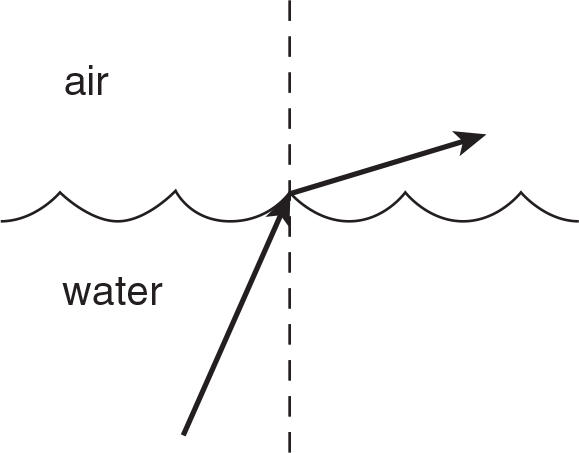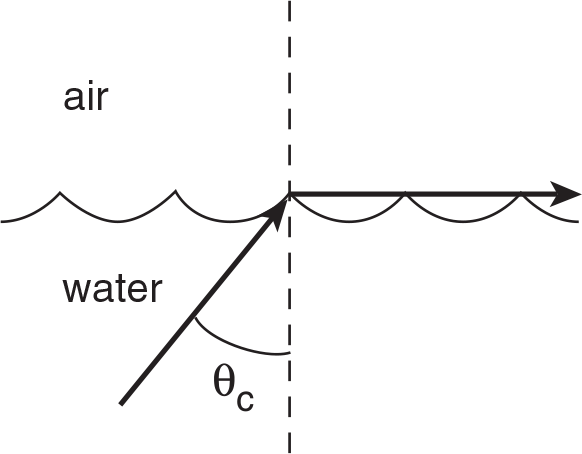
Consider a waterproof laser that you can put under the water to shine a beam of light up out of the water into the air. If you shine the light at a small angle relative to the normal, the light will emerge from the water and bend away from the normal as it enters the air.

As you increase the angle at which the laser is pointed at the surface of the water, the refracted angle also increases, eventually causing the refracted ray to bend parallel to the surface of the water.

The angle of incidence in this case is called the critical angle, θc. If the laser is pointed at an angle greater than the critical angle, the beam will not emerge from the water, but will reflect back into the water.

This phenomenon is called total internal reflection. The inside surfaces of a glass prism in a pair of binoculars can become like mirrors, reflecting light inside the prism if the light is pointed at the surface at an angle greater than the critical angle. Total internal reflection is the also the principle behind the transmitting of light waves through transparent fiber optic cable for communication purposes.